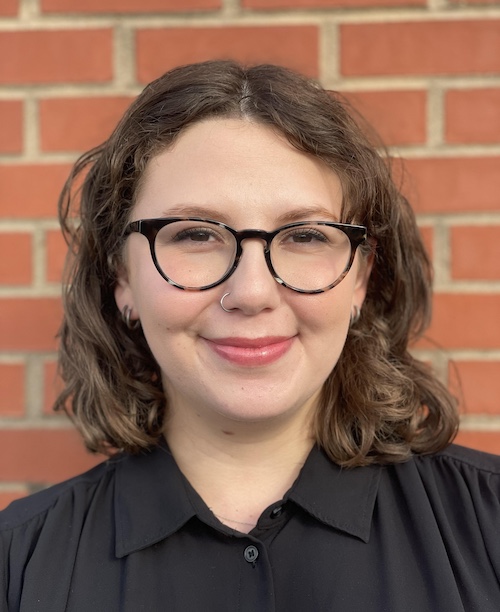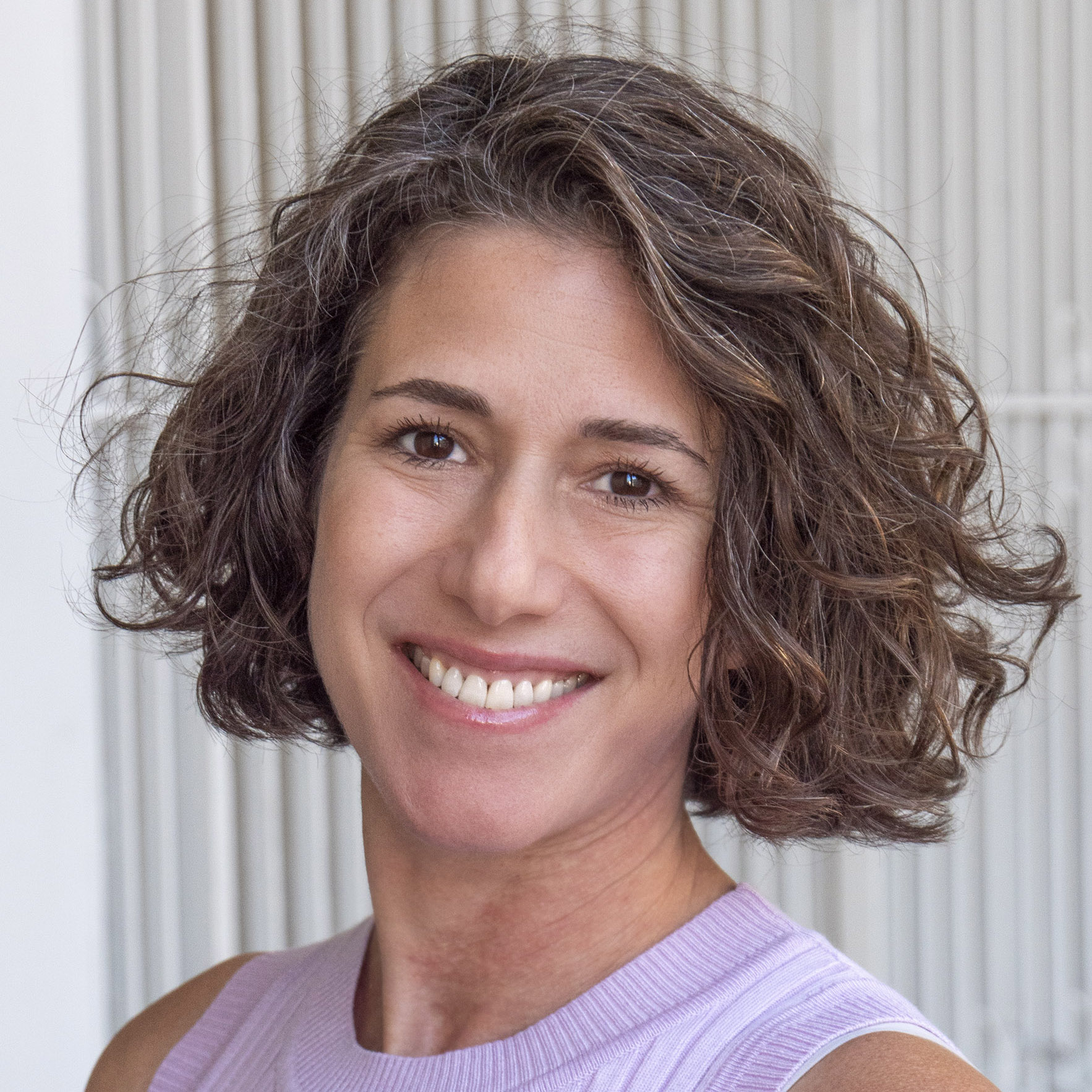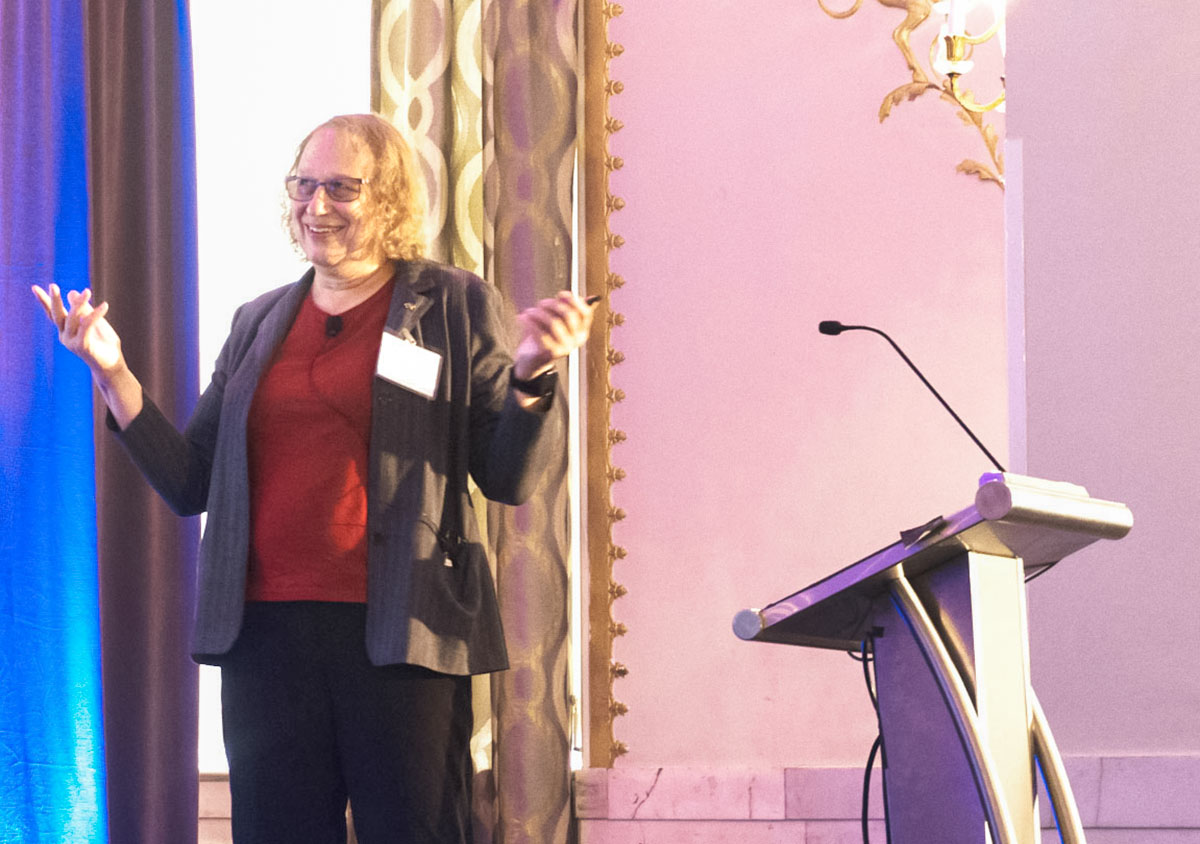
This is How I Got Here, a series where we chart the career journeys of technologists. Want to tell your story? Get in touch.
Joanne Woytek’s career at NASA spans nearly 47 years, and she has no interest in leaving.
The 66-year-old Laurel, Maryland, resident first started at the agency while attending the Rochester Institute of Technology as part of a Co-op program back in the 1970s. She got her start writing code for meteorologists at the Goddard Space Flight Center in Greenbelt, and later took part in creating and now is the program manager for NASA’s Solutions for Enterprise-Wide Procurement (SEWP) — the group tasked with fulfilling IT requests across the US government.
Looking back at the beginning of her career to the present, Woytek has seen herself grow in many ways, she told Technical.ly.
Woytek is the first woman to transition on the job at NASA, which happened in the 90s, and one of the first to do so within the federal government, she said. In the last couple of years, she’s started to appreciate and celebrate her transness, and the strengths that come along with it.
She’s also realized the influence she’s had for other trans people at NASA and workplaces in general.
“In the past two years, I definitely spent a lot of time thinking about and consciously trying to understand,” Woytek said, “that this has been an important part of not just my life — but many lives around me.”
This Q&A has been edited for length and clarity.
What did the beginning of your career journey look like?
I was getting my degree in physics at the Rochester Institute of Technology back in the mid 70s. … I was very interested in astronomy. So obviously NASA was in my sights. I thought that’d be cool to get to, but I didn’t quite know how to do it.
The co-op program works such that after your sophomore year, you start switching a quarter at work and a quarter at school, and you go for five years. My first quarter, I just got set up in some place. I came back and I found out that one of my fellow physics major students got a job at NASA. I’m like, “How’d you do that?” I got the admissions filled out, sent it in, thinking I’d be really nice to work for NASA. I really wanted to be an astronomer.
I got a call. This person [from NASA] starts talking to me about computers and image processing and all these words that I was jotting down. At the end of it all, he says, “I really want you to work for us.” And I’m like, “I want to work for NASA, but I had no idea what you just said.
“My mentor and I wrote the code for the first geographic image of a hurricane from a satellite. That kind of cool stuff makes you want to stay.”
It turns out that the idea was to hire science majors to teach computing, who would then provide programming to the scientists at NASA, specifically the Earth scientists here at NASA. I got stuck in a room with a lady who became my mentor and friend for decades, and together, we formed a little team that started writing code, particularly for the meteorologists doing research here at Goddard Space Flight Center. Just doing a lot of the early days of computing, like how to do image processing and graphics and build upon that. That was the unexpected start.
Once I got going, I realized if I didn’t have a PhD, I would never be an astronomer. I decided I preferred working than going to school for a long time, and stayed on with the computing piece. I had the science degree and utilized it primarily to inform how I wrote programs and supported the scientists here.
You’ve been at NASA ever since. What’s made you stay?
Well, I really enjoyed the work I was doing. I love programming. I really love to program. I love the idea of having an idea, and being able to figure out a way to make a computer make that idea work.
As an example I always throw out there of my early career was my mentor, Mary and I, we wrote the code for the first geographic image of a hurricane from a satellite. That kind of cool stuff makes you want to stay. You’re doing stuff that has something to show for it, that’s helping people out.
I also had a lot of latitude given to me in terms of how I operated, a lot of freedom to do what I was doing as long as I did it right. I’m not a structured person, I’m more of a visionary. So this is the right environment.
Let’s talk about your current role. How did you get there?
In the early 90s, I was just moved from the data center back to the high speed computing facility here at Goddard. My boss came to me and said, “I have to go to this meeting, but I can’t make it. You don’t have to do any other meetings after this, but could you go for me instead?” I said sure.
It turned out to be about this program that was being put together at Goddard by three people who I call the godfathers of SEWP. Their goal was to come up with a procurement vehicle with an asset that would allow our scientists that were having trouble getting computers to get the computers faster. They wanted to expand it out for other people at NASA to more easily buy IT.
I went to this meeting and I got hooked into it. I became the co-tech chair for the board and we developed this program. But we were then asked to make it government-wide.
It became the prototype for what’s called Governmentwide Acquisition Contracts. We ran it as a committee for the first six years or so, with a small group of contractors doing the day-to-day work to run the program. I still continued my regular work at the computing center.
Eventually started doing more technical pieces supporting the program. I got frustrated with the contractor team who was not getting things done that I could get done on my own computer. So I started working on that as a side job. And that’s how I got more and more involved, eventually leading to in ‘99 asking to get a promotion. That’s how I became a program manager.
I went from being one of the programmers, database people, and I had my staff of about 15 people and one civil servant working with me.
What do your day to day responsibilities look like?
Twenty-four years later, the program has been very successful. I have gone from being “I have no idea how to manage anything” to knowing how to manage a lot.
I’m the operational overview. There’s now 130 people working for us, and that includes quite a number of civil servants and contractor staff. It’s become almost a CEO type of position.
“We don’t take any funding from NASA. So we have to operate as a business.”
The program is self funded. There’s no funding coming from Congress, appropriated funds. We don’t take any funding from NASA. So we have to operate as a business. Nobody has to use us. We are a business that exists because people want to use us, and so we have to have customer service and make sure that we’re providing that goodness to the government industry that we’re a place for them to go to sell it and buy it.
Still as a visionary person, who also understands the technical bounds in which we live, and the technical capabilities that are out there, I can hopefully provide new ideas that we keep innovating to try to make us a cutting edge place.
How does your identity influence your work?
As part of all that in the 90s, I did also transition prior to becoming program manager. It’s an interesting question that I’m actually dealing with now, in terms of how it affects me.
In being the first, I almost took on the mantle of “I don’t want to be seen as the first.” I didn’t want to have that label. I just wanted to be Joanne, and just accept me and let me live my life.
In looking backwards now, it probably had a lot more effects than I ever realized, including the staff I have. I have staff that has been with me since I became a manager 27 years ago. Many of them, I have found out, have been supporting me behind my back and appreciate what I had gone through in my life, and I did not understand that for far too long.
Our culture of this program such that diversity is not something we have to talk about. It’s just there. I don’t think I ever consciously planned it to be that way. But I now understand that I have influenced that.
It was only about two years ago that I was fully open to what was going on around me. Sometimes I’m very fast, sometimes I’m really slow. I was really slow for this one. I began to really explore what it means to be a woman, to be a trans woman, to be a leader, to have a staff that values what I bring to the table.
I get that feedback from staff now that I am more openly stating who I am. Stating what it means — it helps them be better people also.
Was there something specific that happened two years ago?
We [the senior staff at SEWP] were sitting in this restaurant, and I don’t even know how it came up, but something came up about myself. This group of people, who are my friends now, started telling stories — and every one of them had a story about support they’ve given me and what people have said about me behind my back, and what they have done in response and how they were affected.
I was so appreciative for their openness and for my being able to accept that openness. Each of them had something to say to me that just made me feel I have had support here. I have an allyship here. I need to own myself, and let me start doing that. And so that broke the mold from where I was to where I am today.
Can you give me examples of how you ‘owned yourself’? What does that look like for you?
Well, it looks like I’m dressed better now.
When I initially told the staff I was transitioning back in the 90s, I was asked: “Are you going to wear a dress?” I said, “Of course, I am.” As things went along, in reducing the volume of who I am, I also reduced the outwardness of who I was. Just wearing regular jeans.
You know what? I like dressing up. Let me dress up again. So that’s a great thing.
But also now I’m talking to people. I am giving talks. It has opened up to others to come to me. I’ve had several people reach out to me — outside of my staff, outside of my friends — asking for support That has been important to me, to be out there representing that you can be successful. You can be who you are. You can be authentic. You don’t have to hide it. It’s going to make your life better and better for the people around you.
What advice do you have for LGBTQ people navigating similar experiences?
There’s the basic advice, which is go find the right people. Don’t do this on your own. Even back in the 90s, there wasn’t a lot, but I was able to find a support group.
“I just can’t imagine doing it without support. So find that support. Find people who are supportive of you.”
This is a tough thing to do. I just can’t imagine doing it, slogging it through without support. So find that support. Find people who are supportive of you. I was fortunate back in the 90s to have some of the friends who helped me in the transition.
It is anxious-driven to be dealing with gender or any issues relating to being LGBTQ. But understand that just because other people are not immediately on the level you’re at, doesn’t mean they aren’t there to support you.
It’s your life. Make it your life and find support where you can.
What’s next for you? Do you see yourself staying at NASA?
I have a platform from which I can speak, not officially, but certainly being employed and being out there in the world gives you a different perspective sitting in a house in retirement.
I enjoy my job, I enjoy the people I work with, I enjoy the opportunities I’ve been given. My current plan is to keep exploring how I can reach out and be a stronger and more supportive voice within the LGBTQIA community. I am just in the beginning of understanding where that might lead to.
So I’m really just exploring. I’m not ready to give this up. I want to really understand where my role is and how I can best play it. So there’s still a chapter or two to be written.
Before you go...
Please consider supporting Technical.ly to keep our independent journalism strong. Unlike most business-focused media outlets, we don’t have a paywall. Instead, we count on your personal and organizational support.
Join our growing Slack community
Join 5,000 tech professionals and entrepreneurs in our community Slack today!

The person charged in the UnitedHealthcare CEO shooting had a ton of tech connections

From rejection to innovation: How I built a tool to beat AI hiring algorithms at their own game

Where are the country’s most vibrant tech and startup communities?



